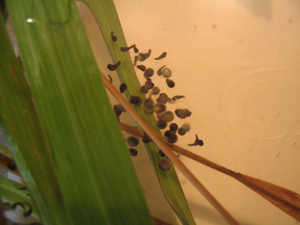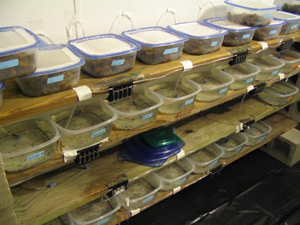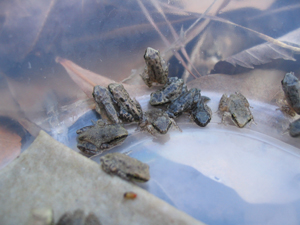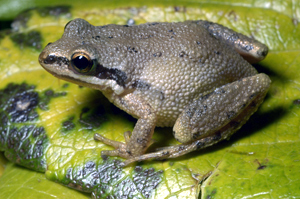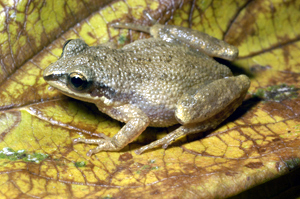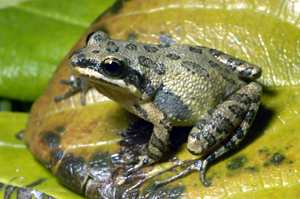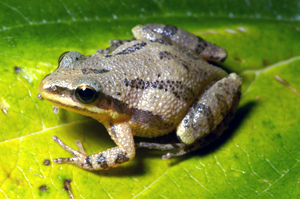Apalachicola National Forest
Virginia Coastal Plain
Mississippi River Drainage
Graduate Student Research
Chorus Frogs (genus Pseudacris)
Frog Hybridization Lab Experiments
Apalachicola National Forest
This national forest is the largest in Florida and is one of our lab's primary research sites. We have been working in this region for nearly a decade. The ponds and fields in the photos below are ~1 hour drive from FSU.
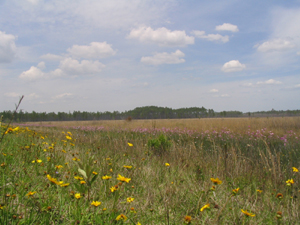 |
|
Nigrita Fields, acidic pitcher plant bogs that are home to a massive Pseudacris nigrita population |
 |
|
Sympatric Pond (Pseudacris nigrita, P. ornata, and P. ocularis habitat; occasionally P. feriarum show up here to breed as well) |
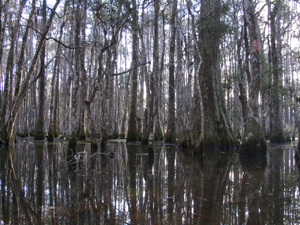 |
|
Cypress Swamp (Pseudacris feriarum and P. nigrita habitat) |
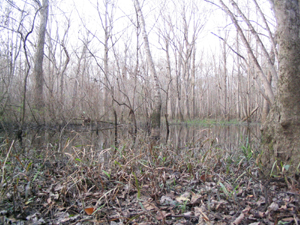 |
|
Florida River field site, home to an extremely large Pseudacris feriarum population |
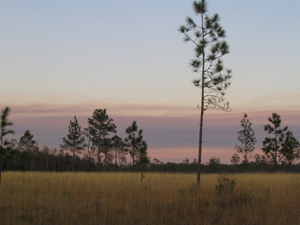 |
|
Nigrita Fields at sunset |
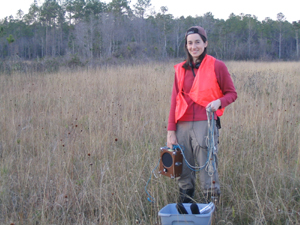 |
|
Emily conducting signal transmission experiments in an acidic bog. |
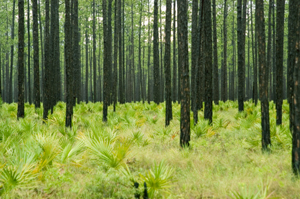 |
|
Longleaf pine forest |
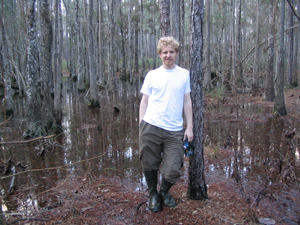 |
|
Alan Lemmon standing on ecotone at interface between cypress-gum swamp (Pseudacris feriarum habitat) and longleaf pine wetland (P. nigrita habitat) in Cypress Swamp. |
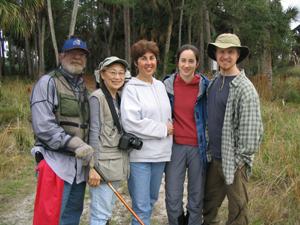 |
|
Several of the fearless participants in the annual herpetofaunal survey of St. Vincent Island National Wildlife Refuge off the coast of the Florida panhandle. |
 |
|
In the Tallahassee region, even non-biologists are passionate about frogs. |
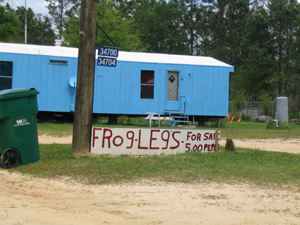 |
|
An avenue of supplementary income for graduate students (this store is in the national forest). |
Virginia Coastal Plain
Some of our other primary field sites are in eastern Virginia, which is at the northern extremity of the Pseudacris feriarum, P. nigrita, and P. brimleyi distributions. These taxa came into geographic contact more recently up in Virginia than in southern regions.
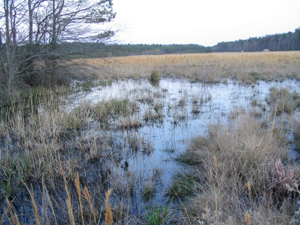 |
|
Sympatric Pseudacris feriarum and P. nigrita habitat at Grafton Ponds in Newport News, Virginia |
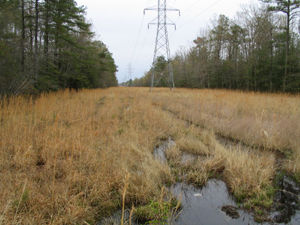 |
|
Site of three sympatric trilling Pseudacris species (P. nigrita, P. feriarum, and P. brimleyi) near Wakefield, Virginia |
 |
|
Prime Pseudacris habitat in eastern Virginia. This site was slightly dangerous because of the frequent trains. Note: never turn your headlight on to let the train conductor know you are in the ditch . . . |
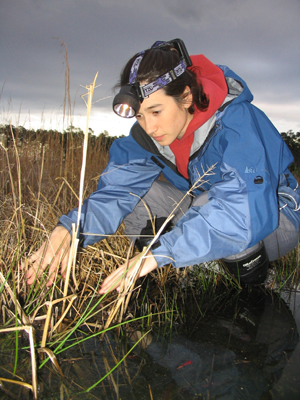 |
|
Emily looking for Pseudacris at Surrender Fields (site where the British surrendered to George Washinton in the Revolutionary War) in Colonial National Park. |
Mississippi River Drainage Spring 2008
In 2008, we conducted fieldwork along the Mississippi and Ohio River floodplains in Kentucky, Illinois, Missouri, Arkansas, Tennessee, and Indiana collecting chorus frogs and their calls. We managed to avoid being swept away by the major floods that year.
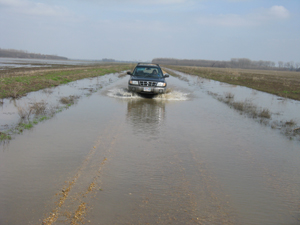 |
|
Off-roading in a borrowed vehicle in the flooded Mississsippi River floodplain. |
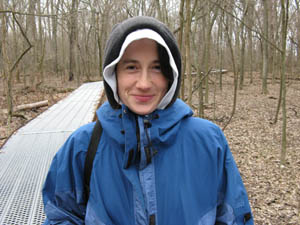 |
|
Peak Pseudacris breeding season is in the winter when nighttime temperatures are between 30-40 deg C. Smart herpetologists prefer warmer climes. |
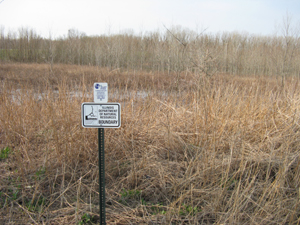 |
|
Prime Pseudacris habitat north of Cairo, Illinois. This wetland is Illinois conservation land. |
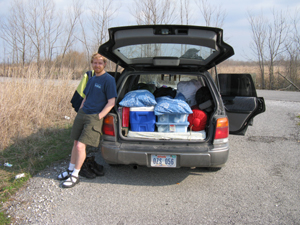 |
|
Living out of the car during fieldwork. We moved all this gear to the front seat each night so we could sleep in the back (Alan Lemmon shown). |
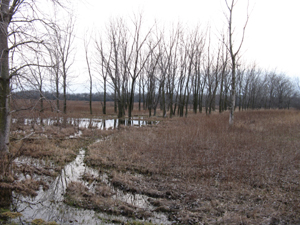 |
|
More prime Pseudacris habitat in Illinois. |
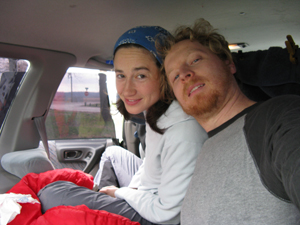 |
|
Camping in the car during fieldwork. We would work until about 4am and then sleep until noon. To avoid getting wet on rainy days, we figured out how to move our gear from the front seats to the back and vice versa without getting out of the car. Oh yeah. |
 |
|
The severe flooding of the Mississippi River during spring 2008 drastically limited the number of roads we could explore to find frogs. They were probably all eaten by fish anyway. |
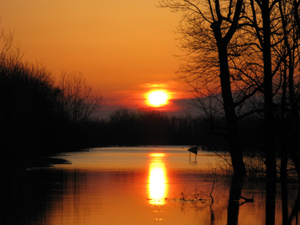 |
|
Sunset on the flooded Mississippi River (that’s a road sign out there by the way) |
 |
|
This is our kind of town (somewhere in Tennessee). |
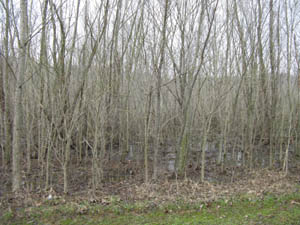 |
|
This wetland contained a large, continuous chorus of Pseudacris feriarum. |
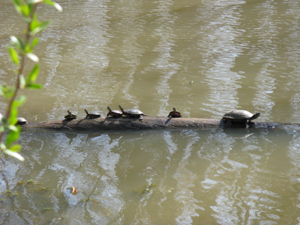 |
|
Chrysemys picta in southern Illinois. |
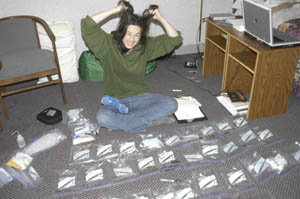 |
|
Overwhelmed with frogs to dissect (we collected 1000 specimens and recorded 500 frogs in 6 weeks). |
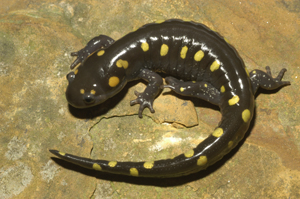 |
|
The next four photos are several salamander species we encountered during Pseudacris fieldwork. These animals were either crossing the road or in the breeding ponds where we were collecting. Ambystoma maculatum |
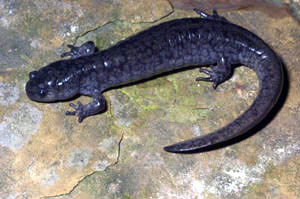 |
|
Ambystoma texanum |
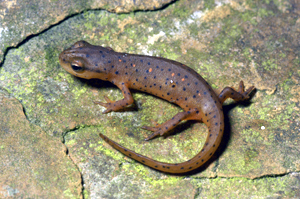 |
|
Notopthalmus viridescens |
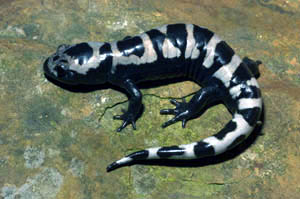 |
|
Ambystoma opacum |
Graduate Student Research
Here are various photographs from graduate student research projects (mostly fieldwork).
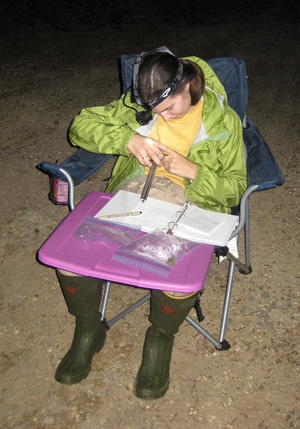 |
|
Alexa Warwick measuring Hyla andersonii in the field |
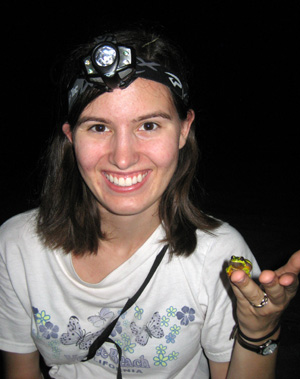 |
|
Alexa with an adult male Hyla andersonii |
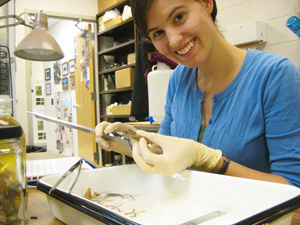 |
|
Alexa measuring preserved Hyla andersonii specimens at the North Carolina State Museum |
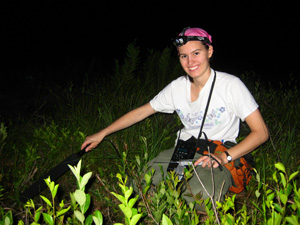 |
|
Alexa recording Hyla andersonii in the field |
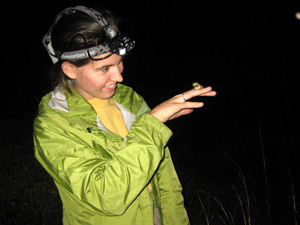 |
|
Alexa getting acquainted with her study organism |
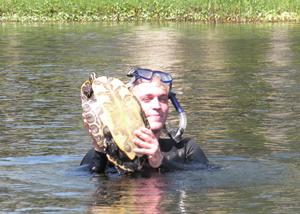 |
|
Moses Michelsohn snorkeling for Pseudemys in Rainbow Springs State Park, Florida (this one is "Big Boy") |
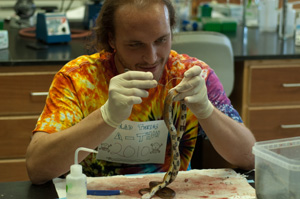 |
|
Moses dissecting tissue from roadkill for the 2010 Dead-Thing-A-Thon |
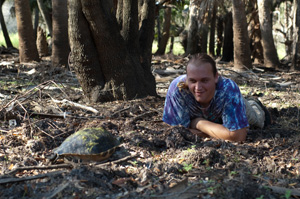 |
|
Moses having a staring contest with a Pseudemys (he lost, by the way . . .) |
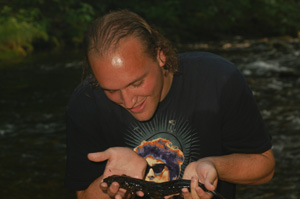 |
|
Moses handling a Cryptobranchus (hellbender salamander) |
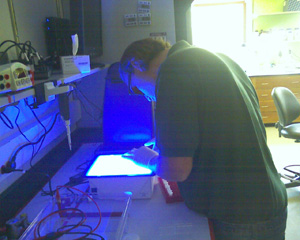 |
|
Moses cutting bands from a gel |
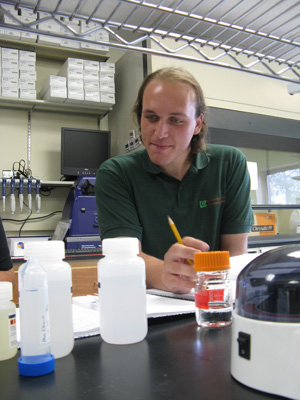 |
|
Moses working hard in the lab |
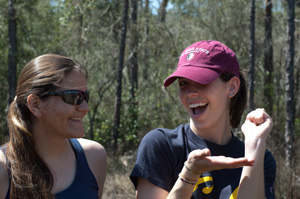 |
|
Lisa Barrow (left) and Mallory Bedwell (right) in the field |
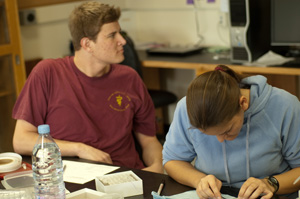 |
|
Connor Walsh and Lisa dissecting frogs |
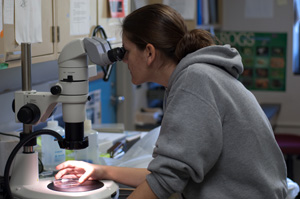 |
|
Lisa quantifying fertilization success of frog embryos |
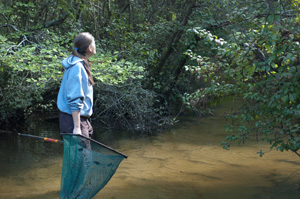 |
|
Lisa thinking deep thoughts in a stream near the Apalachicola National Forest |
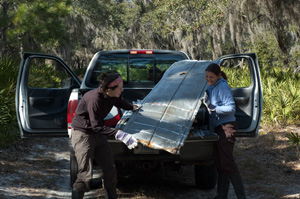 |
|
Lisa and Mallory unloading tin on St. Vincent Island National Wildlife Refuge to make ground cover for reptiles and amphibians |
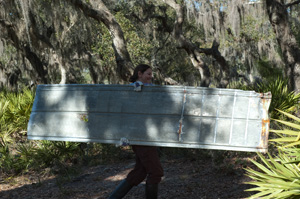 |
|
Lisa moving more tin |
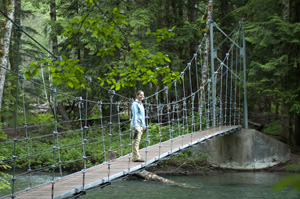 |
|
Lisa doing fieldwork in the Pacific Northwest |
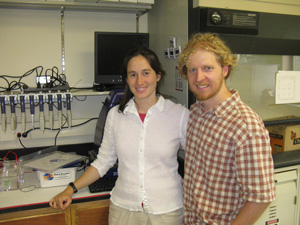 |
|
Emily Lemmon and Alan Lemmon at the lab opening in summer 2009 |
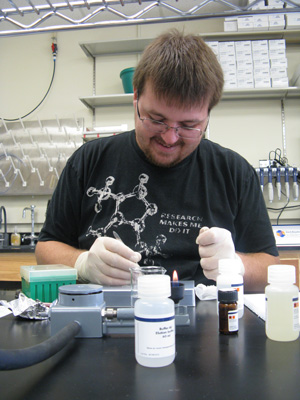 |
|
Brian Caudle (former lab technician) |
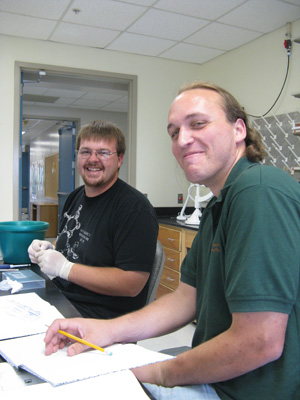 |
|
Brian and Moses working hard . . . |
 |
|
Brian setting up the gel doc |
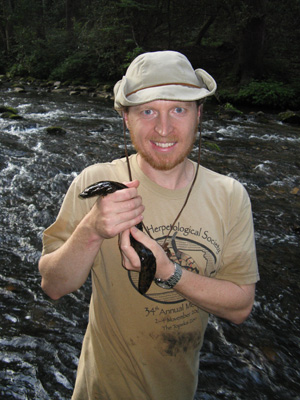 |
|
Alan Lemmon on a lab field trip to the Appalachian Mountains in summer 2009. Here he is holding a newly captured Cryptobranchus alleganiensis (hellbender salamander). |
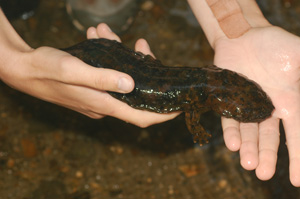 |
|
Cryptobranchus alleganiensis (hellbender) |
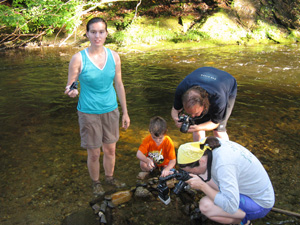 |
|
Alexa, Moses, and Emily photographing the hellbender. Matthew Beamer is assisting. |
 |
|
We corralled the hellbender for photographing |
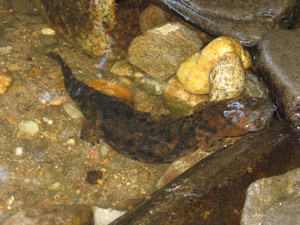 |
|
Cryptobranchus alleganiensis (hellbender) |
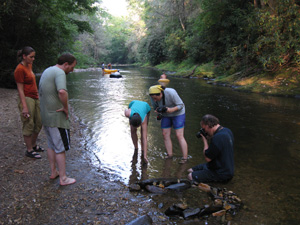 |
|
Same group as above, plus David Beamer and Lisa |
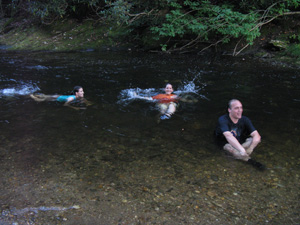 |
|
Lemmon Lab graduate students Alexa, Lisa, and Moses working hard chasing hellbenders |
Chorus Frogs (genus Pseudacris)
Below are photos of all members of the genus Pseudacris except two currently controversial taxa of the P. regilla species complex (P. hypochondriaca and P. sierra). For a phylogeny, click here.
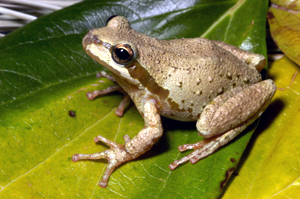 |
|
Pseudacris regilla |
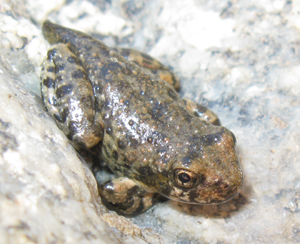 |
|
Pseudacris cadaverina |
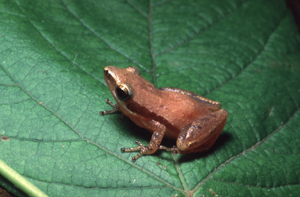 |
|
Pseudacris ocularis |
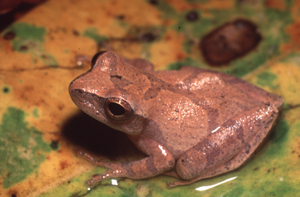 |
|
Pseudacris crucifer |
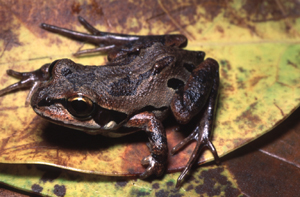 |
|
Pseudacris ornata |
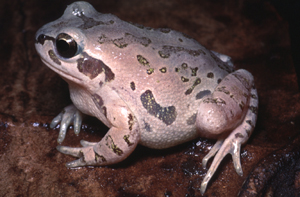 |
|
Pseudacris illinoensis |
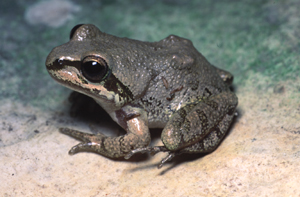 |
|
Pseudacris streckeri |
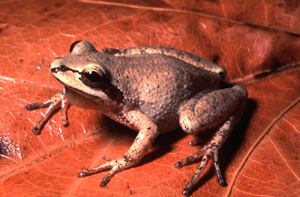 |
|
Pseudacris brachyphona |
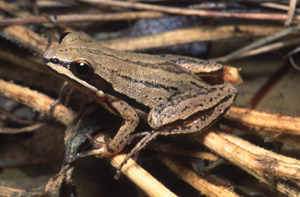 |
|
Pseudacris brimleyi |
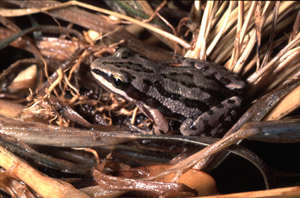 |
|
Pseudacris maculata |
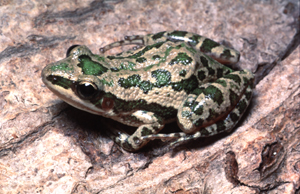 |
|
Pseudacris clarkii |
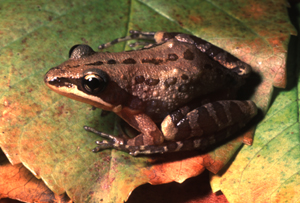 |
|
Pseudacris nigrita |
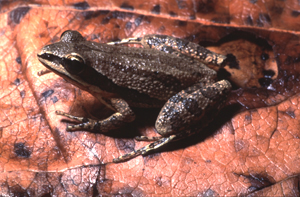 |
|
Pseudacris fouquettei (we described this new species in 2008; for newspaper articles, click here) |
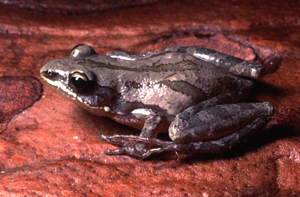 |
|
Pseudacris nigrita x fouquettei hybrid (field-caught) |
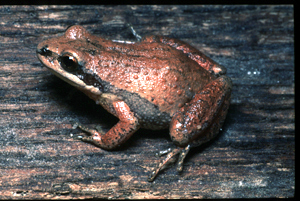 |
|
Pseudacris kalmi |
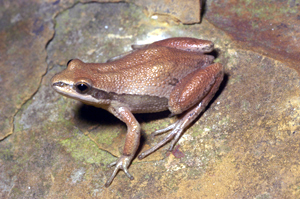 |
|
Pseudacris triseriata |
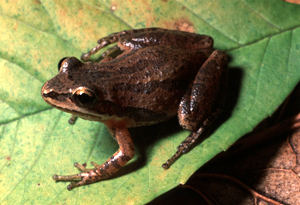 |
|
Pseudacris feriarum |
Frog Hybridization Lab Experiments
To study the strength of natural selection against hybridization, we crossed two chorus frog species and raised the offspring in the lab until they reached sexual maturity (at one year). The following photographs document this experiment.
|





































































